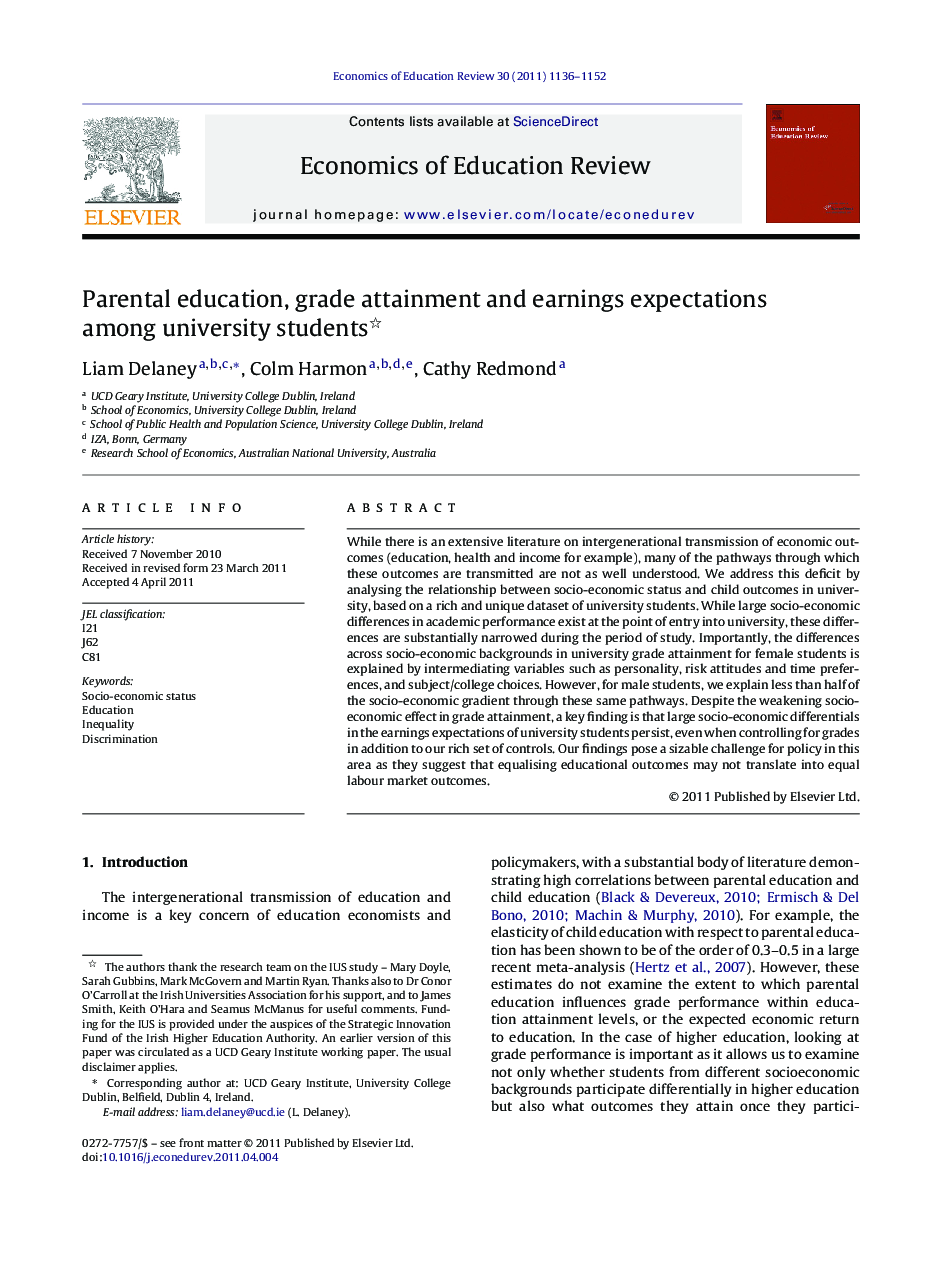| کد مقاله | کد نشریه | سال انتشار | مقاله انگلیسی | نسخه تمام متن |
|---|---|---|---|---|
| 354513 | 1434838 | 2011 | 17 صفحه PDF | دانلود رایگان |

While there is an extensive literature on intergenerational transmission of economic outcomes (education, health and income for example), many of the pathways through which these outcomes are transmitted are not as well understood. We address this deficit by analysing the relationship between socio-economic status and child outcomes in university, based on a rich and unique dataset of university students. While large socio-economic differences in academic performance exist at the point of entry into university, these differences are substantially narrowed during the period of study. Importantly, the differences across socio-economic backgrounds in university grade attainment for female students is explained by intermediating variables such as personality, risk attitudes and time preferences, and subject/college choices. However, for male students, we explain less than half of the socio-economic gradient through these same pathways. Despite the weakening socio-economic effect in grade attainment, a key finding is that large socio-economic differentials in the earnings expectations of university students persist, even when controlling for grades in addition to our rich set of controls. Our findings pose a sizable challenge for policy in this area as they suggest that equalising educational outcomes may not translate into equal labour market outcomes.
► We model university admissions, performance and student expectations with focus on socio-economic status (SES).
► University admissions processes are predictive of academic performance in university.
► Observed socio-economic differences in grades decline significantly over the course of the student's time at University.
► We do not strong evidence that SES differences in personality traits contribute to explaining SES differentials in grade performance.
► There is a large, significant and persistent gap by SES in future earnings expectations.
Journal: Economics of Education Review - Volume 30, Issue 6, December 2011, Pages 1136–1152